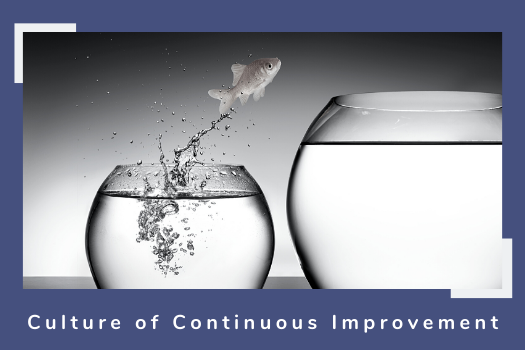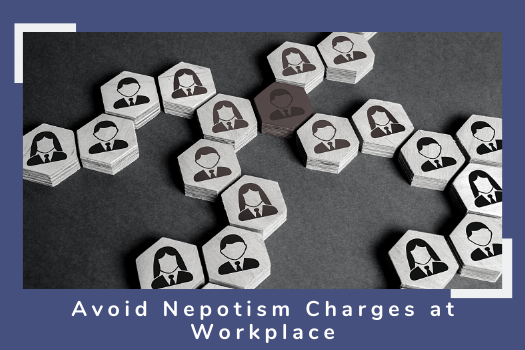Helping you build a Culture of Continuous Improvement
Employee Engagement, Employee Relations, Rewards and Recognition
Companies around the globe must realize that stagnation in terms of culture improvement will ultimately lead to the downfall of the organization, which is the last thing any organization desires. It is more than a necessity to work towards an expandable culture that would power and consequently, improve the operational efficiency of the organization. It is crucial to adopt a strategy that runs parallel to the workflow, business model and most importantly the culture of the organization. Every organization must cater to its problems and must come up with a culture where the emphasis is on getting the work done in the most efficient manner.
People who are the driving force of the company and the stakeholders are always in need of formulating new strategies that can be effective. All the organizations are unique in their own way and there are several steps that are necessary for building a culture that is both continuous and substantial. If you're running a business and you want to increase productivity, then it is imperative to come up with a continuous improvement culture in the organization. This will not happen overnight, but continuous and incremental improvements will guide the organization to heights of success.
Here are some tips that you can ponder on to build a constant improvement culture in your organization and business:
Have a definitive goal: When it comes to developing a cutting-edge initiative, it is important to understand that the beginning must have an end. The initial step is to get the entirety of the existing work culture alongside the business model of the organization. Evaluation is the first step towards a massive change. Once you get to know the loopholes which exist in the culture and business model, you get an insight into things that need to be changed.
Always have a practical alongside an idealistic approach when you’re making a massive change and think about the progress you can bring in the next decade or 30 years from now. If you’re not aware of the endgame that you desire to have, then it would be difficult for the executive.
Employees should be in the core: It is important to do things very differently in distinctive times as change is inevitable. Things of importance today become obsolete tomorrow, this is how the world and the universe work. The variation would aid employees from having a mindset that is entitled!
When you’re bringing a massive change, employees should be a part of it. As an organization, you can award employees for their participation and contribution in constant change in work culture. Ultimately employees are the ones who will work on the ground level to incorporate the change that is sought after, hence it seems to be a wise decision to make the employees aware of the changes that need to be brought about and the impact they will bring to the organization. The bottom-up approach of strategy making might be resorted to, get in touch with the employees.
Curate a framework: To make the continuous improvement program a norm in the organization a process is needed. The framework or the process would improve the operations of the business model and set some new processes to develop, analyze and adapt ideas of improvement. It will also set a definitive roadmap on how to proceed with the plan.
The continuous improvement programs are embedded with several philosophies, tools, and management principles that can be put into use in any sort of improvement program.
Make sure that the goal is heard: Once the business model for continuous improvement is curated, you’ll need the stakeholders to become an integral part of the improvement. Further, you’ve to spread the message which you want to be heard by employees in your organization or business.
In the meantime, the feedback which you receive from the stakeholders is crucial as that would allow in refining the targets. Given that you’re aware of your goals, it is essential to put the goal in a definitive time frame in writing. By the looks of it, the written goals can be accessed by everyone across the organization. Achieving goals becomes easy if the vision and the entirety of embarking a new mission can be understood by everyone in the organization.
Everyone should take responsibility for the change: When it comes to continuous improvement, it is important that everyone in the organization should participate to make consistency a core component. Irrespective of whether it is the management or executive suite or line workers, everyone is needed to take responsibility for improving the work culture.
When all the employees are engaged then the continuous improvement program tends to become effective. Further, the collaborative efforts of everyone will bring a proactive approach to improve the areas which need to be improved. Employees have to understand their roles and make the necessary contribution to enhancing the program. By working together, the responsibility will be shared in a compartmentalized way to make continuous improvement achievable.
Try not to drag: It takes a lot of work to bring continuous improvement to life in an organization. The estimation requires extensive work that the leaders are unaware of, hence prioritizing the initiative and making a roadmap to achieve goals steadily is important. If an organization begins to rush a surplus amount of changes at a single time, then things will begin to crumble.
In the first couple of quarters to a year, it is important for an organization to keep tabs on the effort that employees and management are bringing to the platter. Eventually, it will be spread evenly, and the initiative will become sustainable.
This would indicate the number of changes that people in your company will be able to handle at the given time frame. It is historically proven that doing a lot of things at once leads to a bad phase and later it would cause significant problems for the organization and its people.
Given that continuous improvement is a long-term goal, it is often labeled as repetitive. Changes do not happen overnight, and they do not take place instantly. Sometimes, bringing the initiative from scratch might be a big accomplishment altogether. There is no end in continuous improvement hence an organization should keep on trying until they reach the phase where the operation is seamless. Improving the working culture of a company is the toughest task yet it is necessary.






